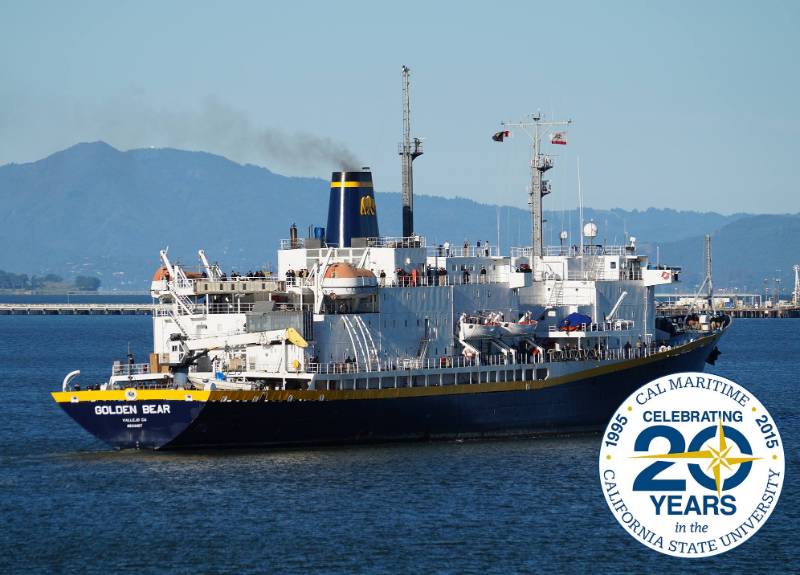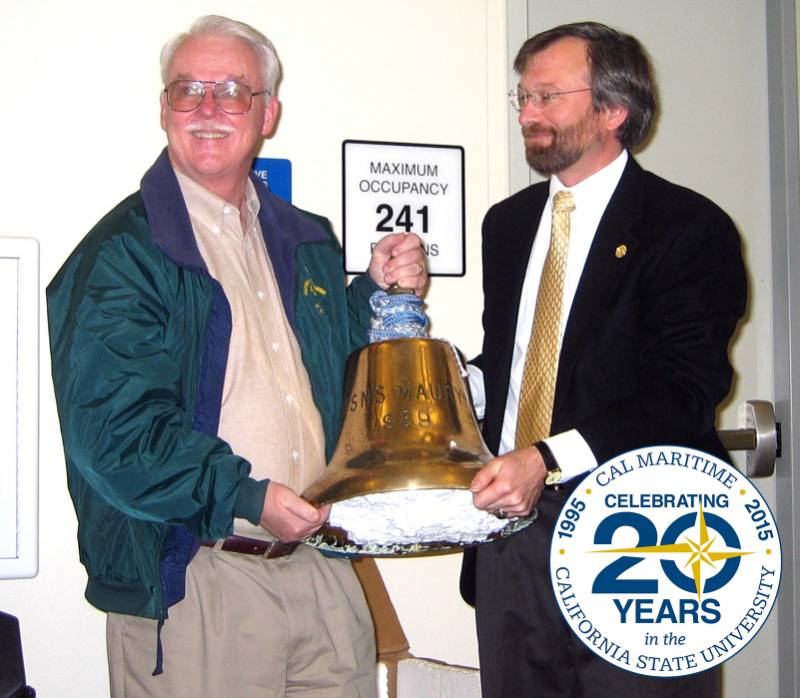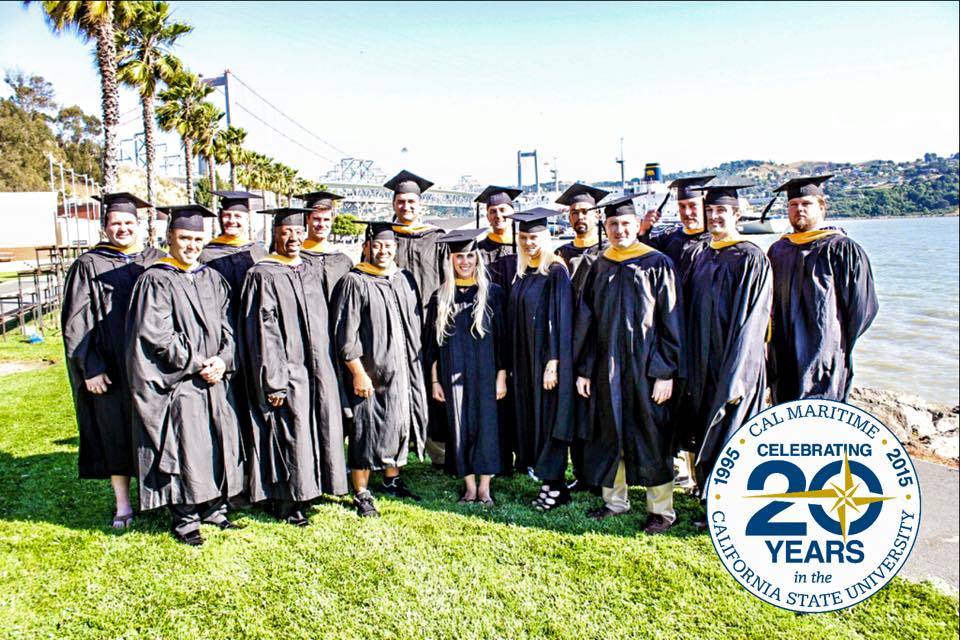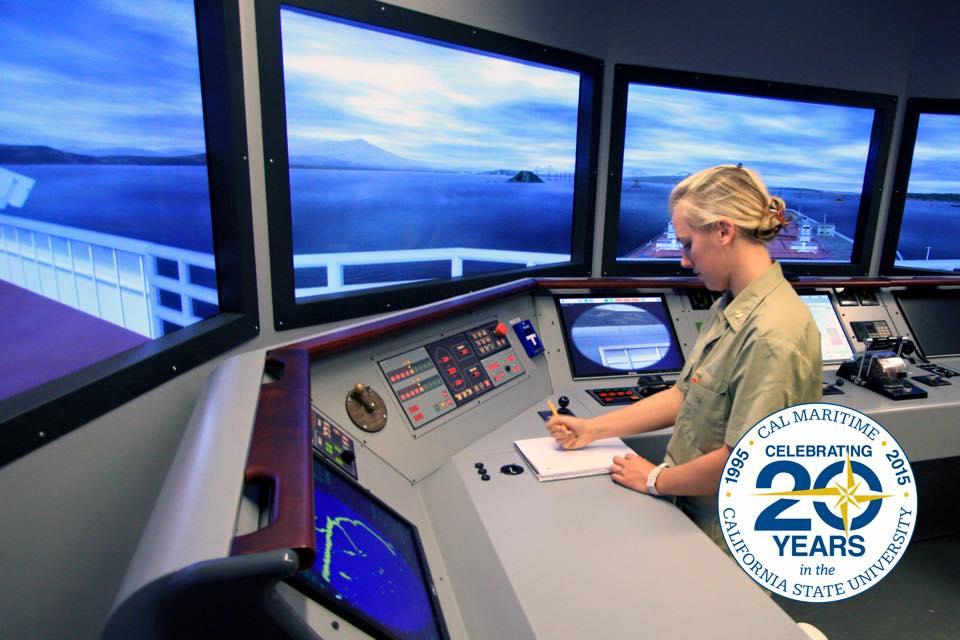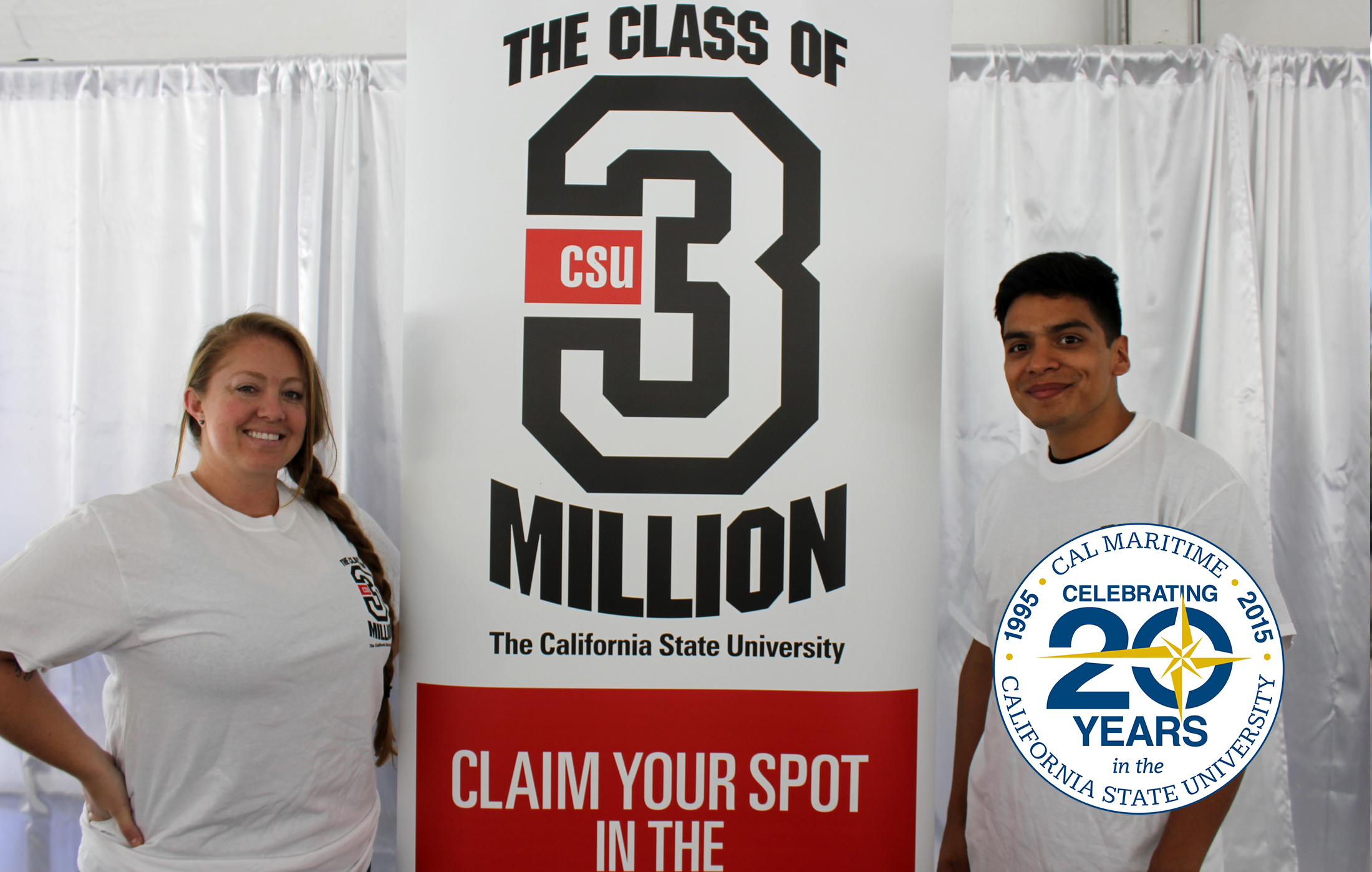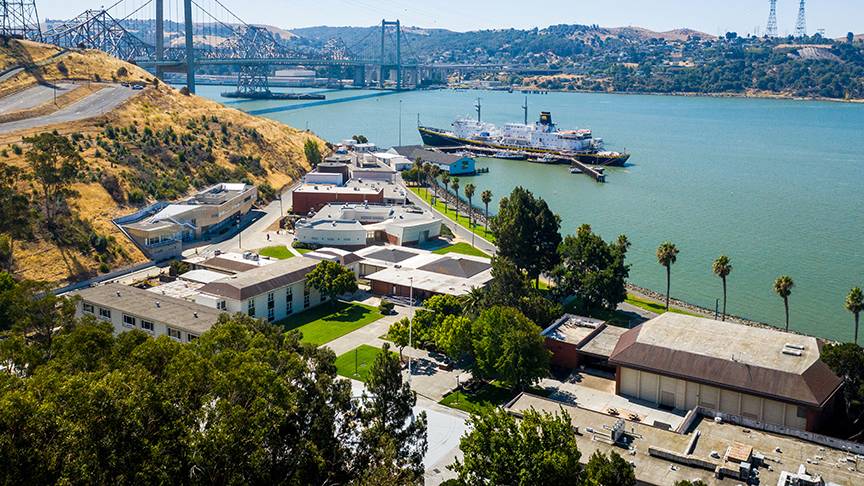September 15 marks Cal Maritime's 20th anniversary as a unique campus of the California
State University. To mark this important date in our history, we're recognizing 20
important, interesting, and distinctive moments at Cal Maritime in the last 20 years.
Day 1 - August 27
In 1995, Cal Maritime's president was Dr. Mary Lyons, the first female president of
a maritime academy. Below is a picture of President Lyons with CSU Chancellor Barry
Munitz holding the proclamation welcoming and accepting Cal maritime as the 22nd campus
of The California State University.
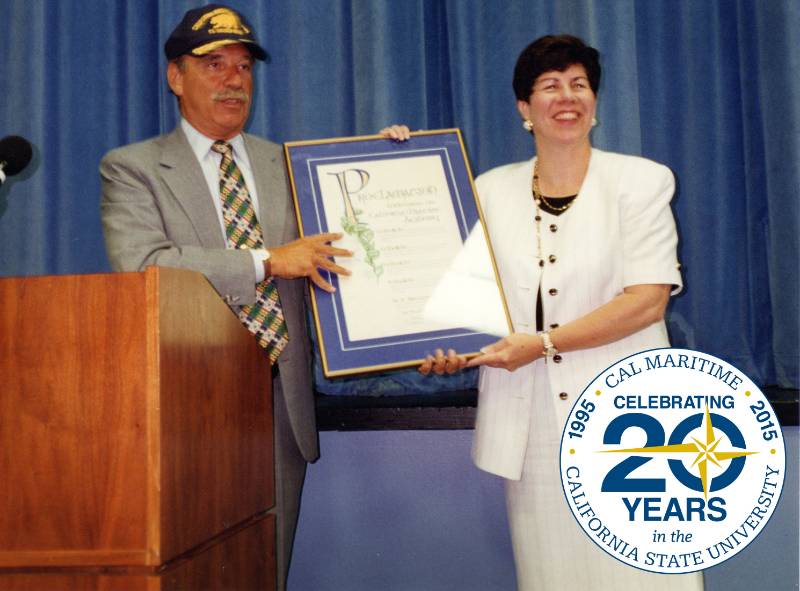
Day 2 - August 28
T.S. Golden Bear III was built for the U.S. Navy as a Hydrographic Survey Vessel to
map the deep ocean floor. At the time built, she was the largest and fastest oceanographic
ship ever built.
She was placed out of service in September 1994 and laid up in Reserve Fleet Suisun
Bay.
After the conversion of her living spaces, she was transferred to Cal Maritime on
May 4, 1996.
T.S. Golden Bear (TSGB) is the fourth and largest training ship at Cal Maritime, and
is the third training ship to carry the name GOLDEN BEAR.
Day 3 - August 29
When Cal Maritime opened its doors for instruction in 1931, there were 56 students.
After joining The California State University in 1996, there were over 500 students
actively enrolled. Today, the campus serves approximately 1200 students.
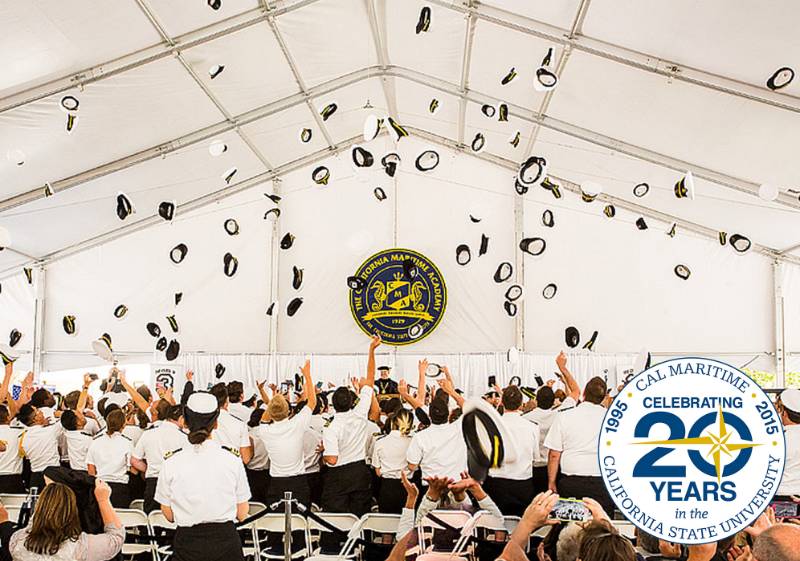
Day 4 - August 30
At Cal Maritime, both terms have been used at various times. Primarily, students have
been designated as CADETS, except between 1949-1959 and 1991-1994, when they were
denoted as MIDSHIPMEN. According to files held in the Cal Maritime Historical Archives,
those enrolled at Cal Maritime in the M.M.R./ USNR program are referred in Navy directives
as Midshipmen. People participating in the Coast Guard's MARTP/USCGR program are referred
to as Cadets in their directives, both parallel to their Academy equivalents. Currently,
students in general are referred to as "cadets" on campus.
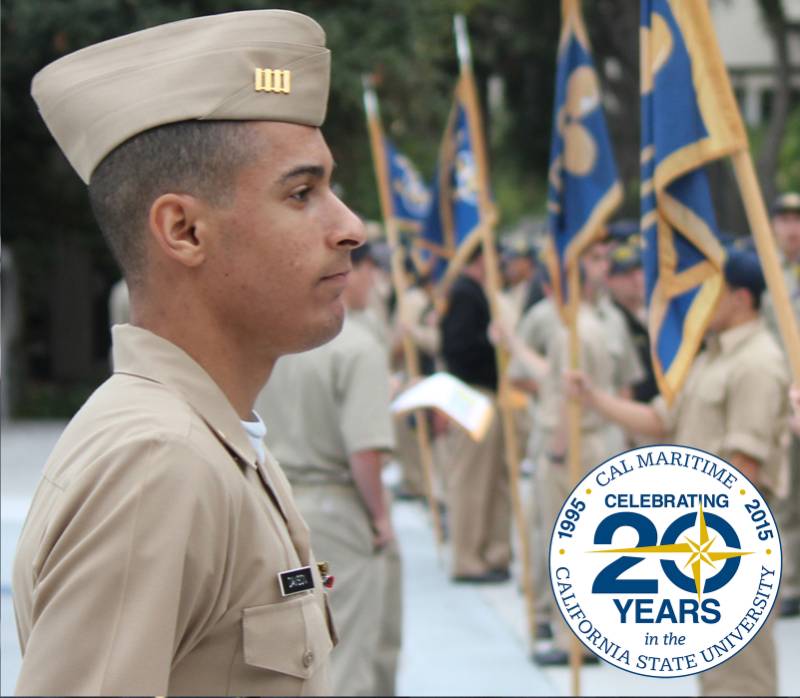
Day 5 - August 31
When Cal Maritime acquired our current Training Ship Golden Bear (former USNS Maury)
in 1996, it arrived without a bell. Since the law requires every ship to have a bell
to serve as an essential instrument that warns others of hazards, the bell from the
first T. S. Golden Bear (former USS Mellena) was installed instead.
It was discovered that the Naval Historical Center in Washington, D.C. had retrieved
the bell when the USNS Maury was decommissioned in 1994. The bell was later loaned
to a shore Navy command on the East Coast for permanent display. In 2004, Cal Maritime
requested that the bell be returned to its rightful place on board the ship that the
bell was made for. After much time of considering the request, the Navy finally granted
approval.
The bell, which finally arrived at Cal Maritime in February 2005, was installed onboard
the T.S. Golden Bear. When the ship cast off its lines for its annual training cruise
in May 2005, it was the first time since 1970 that a Cal Maritime training ship sailed
with the bell that was made specifically for that ship. Maury's bell was home!
Day 6 - September 1
The 18-foot long and 18-ton propeller that stands adjacent to the Technology Center
was cast in 1944 by Cramp Brass and Iron Foundries in Philadelphia for Marinship Corp.
of Sausalito. It was then installed on the U.S. Navy T-2 tanker Mascoma, one of 500
such ships built for Pacific fleet service. After the war, she was eventually converted
into the containership S/S Transchamplain. The ship was scrapped in Kaohsiung in 1981,
but the propeller was preserved and rescued from a scrapyard for its installation
at Spear Street in San Francisco.
The massive unit (donated by the 100 Spear Street Owners Corp. as an asset under advisory
control of ING Clarion Partners) was brought to campus in 2010 and serves as a distinctive
symbol of our maritime roots.
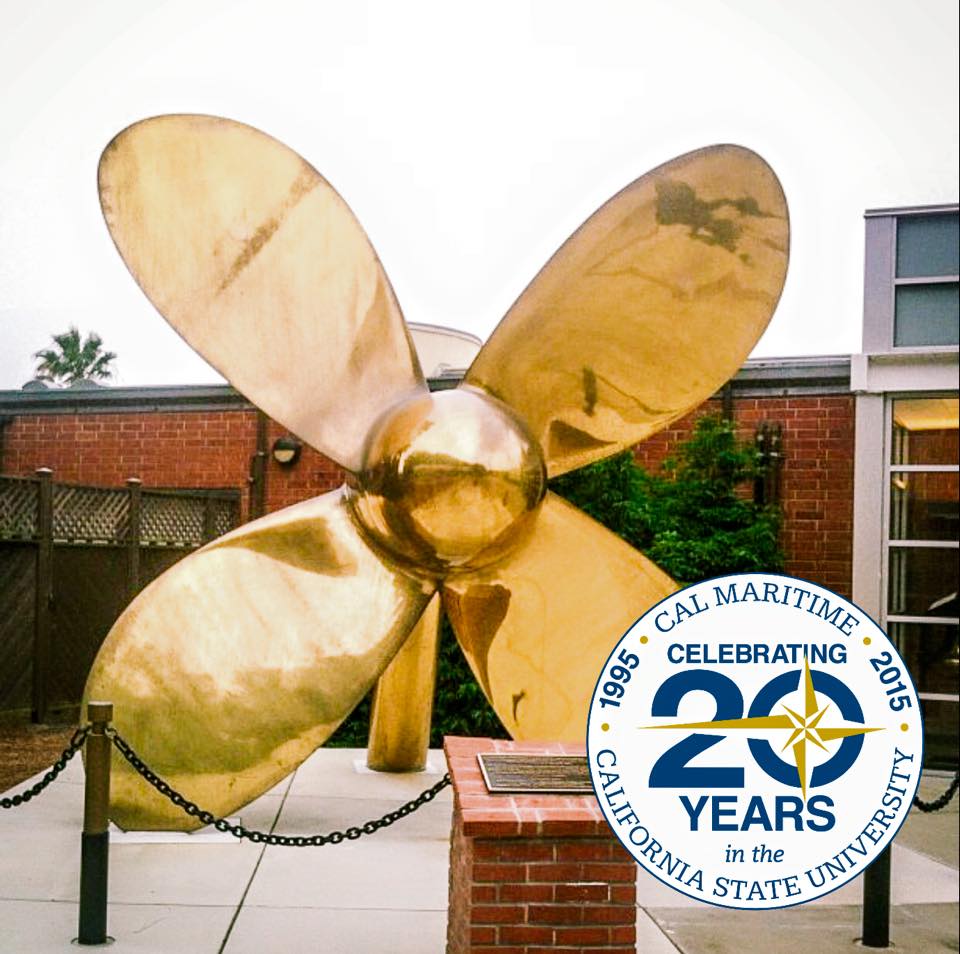
Day 7 - September 2
In the spring of 2007, the 1967 "Keema, The Bear" statue, located in the Quad, was
decapitated by explosives. When the search began for a replacement, the committee
decided to find one that would be less vulnerable to future vandalism.
The new Keema is a bronze bear, made by an out of state sculptor. Additionally, a
second standing bear statue was purchased in tandem with the first one. The second
bear was posed on its hind legs and is home along Maritime Academy Drive at the north
end of the Technology Center.
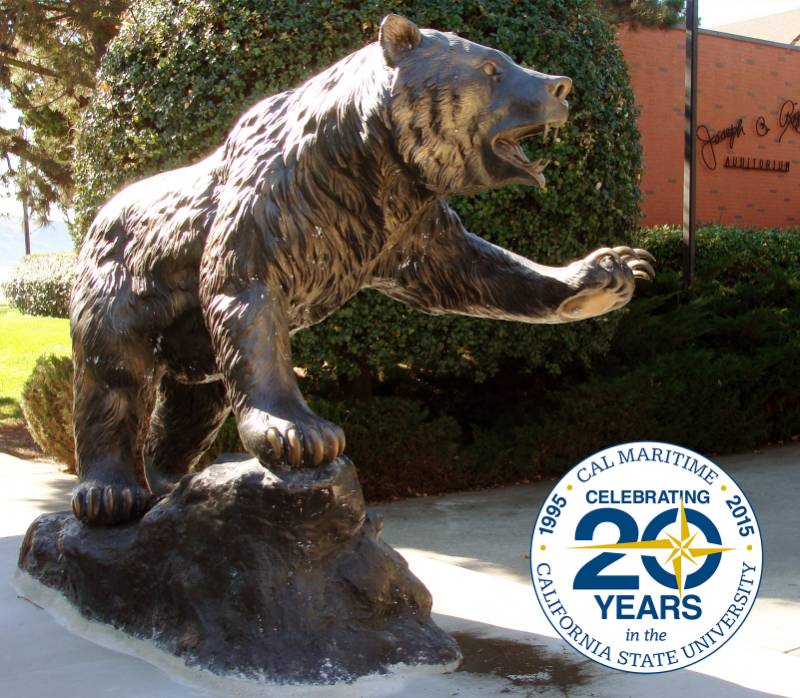
Day 8 - September 3
Cal Maritime launched its first graduate degree program, a Master of Science in Transportation
and Engineering Management, and Humanitarian Disaster Management, on September 4,
2011. This expanded the university's commitment to the development of industry leadership
through the offering of an outstanding program which integrates critical thinking
and best practices to enable graduates to face present day challenges and contribute
meaningfully to the industries they serve.
The Master's program is offered in a fully online, asynchronous format using the Moodle
platform, making instruction available to the student every day, around the clock,
during the semesters in which he or she is enrolled.
The first graduates of the Master's program completed their coursework in 2013.
Day 9 - September 4
In 2008, Cal Maritime announced the opening of its new Simulation Training Facility,
one of the most advanced in the world. With two 360-degree projection systems and
numerous smaller simulators that can interlink, an oil spill trajectory simulator,
a liquid/gas cargo handling simulator, and a crisis management center, the facility
creates a strikingly realistic environment for training, research, accident investigation,
and crisis management with the ultimate goal of safer navigation, and the preservation
of life and the environment.
While simulation mirrors the realities at sea, the new simulation facility comes as
close as possible to creating a real life maritime world where visual, practical learning
tactics can help transform knowledge into advanced professional leadership skills.
All the bridge simulators are capable of acting as separate, stand-alone vessels in
a training exercise, each with visual views of the others and capable of communicating
and interacting virtually with one another. This technology is a total shift in maritime
training techniques of the past. With interactive bridges, multiple constituents can
participate in the training, each focusing on their specific roles while working together.
Additionally, the hardware used provides the capability of emulating many different
propulsion systems.
Day 10 - September 5
In 2013, after summer at sea and in dry dock, Cal Maritime's Training Ship Golden
Bear returned to campus with a new paint job.
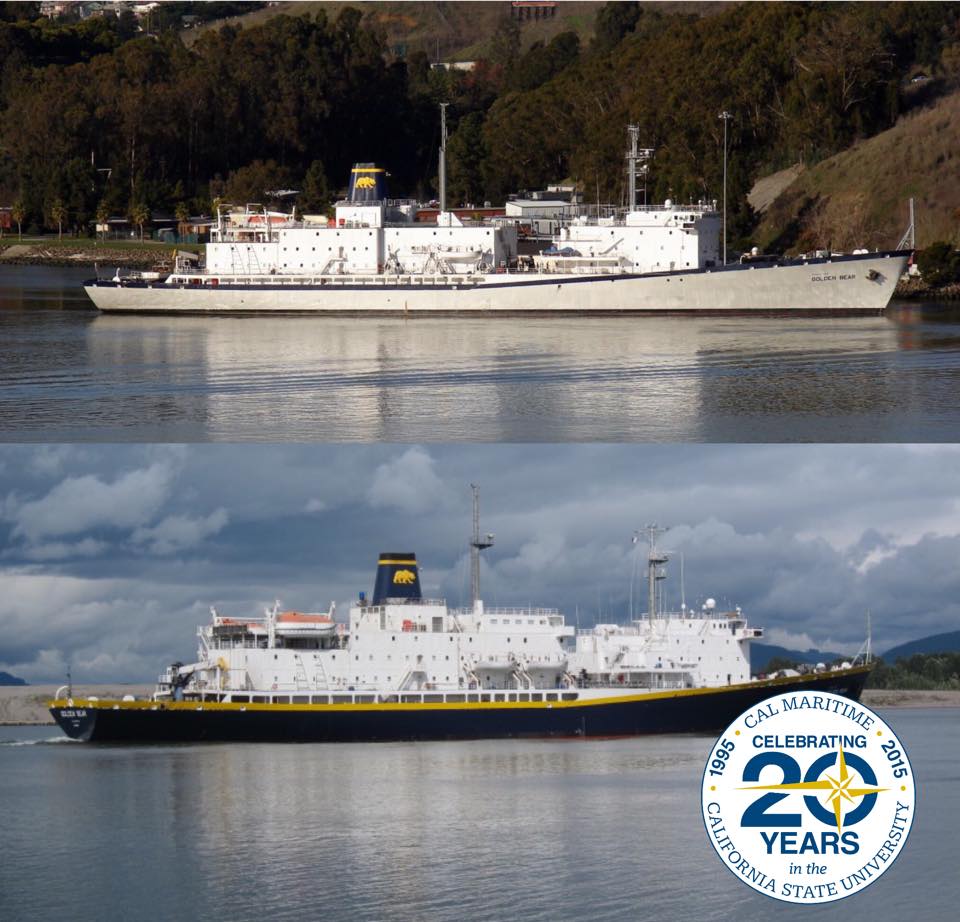
Day 11 - September 6
In 2003, the Global Studies and Maritime Affairs major was introduced to Cal Maritime.
It was the first new major to be accepted after the university's full transition into
the CSU system. Global Studies and Maritime Affairs combines a rigorous foundation
in international relations and the social sciences with an emphasis in maritime and
environmental policy. A combination of coursework, internships, and study abroad opportunities
prepares students to be a leader and decision-maker for global maritime policy agencies,
organizations, and corporations.
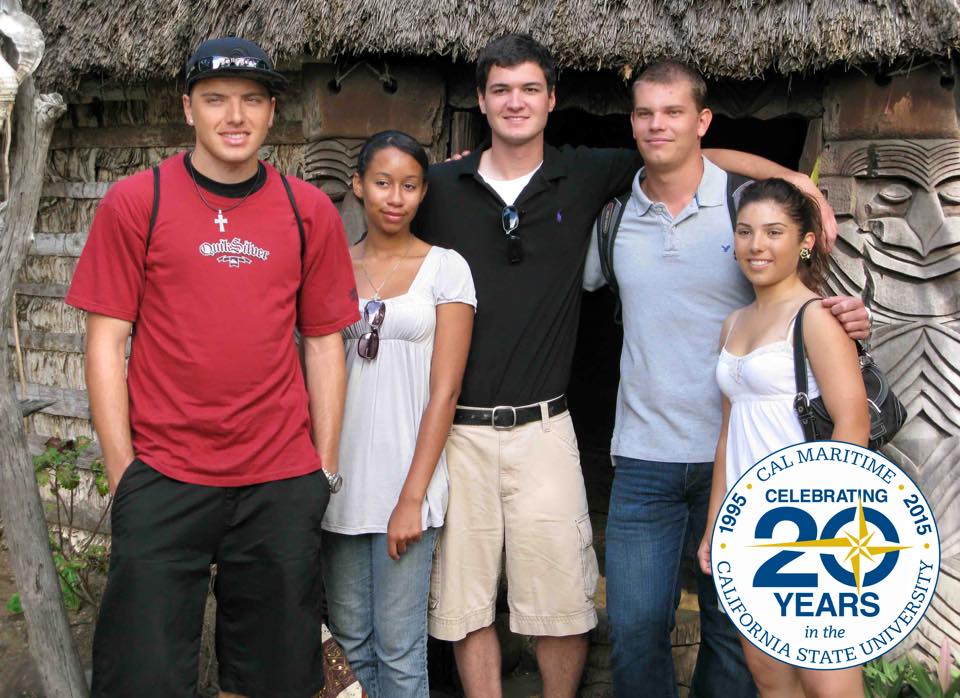
Day 12 - September 7
Completed in 2009, Cal Maritime's newest residence hall was named McAllister Hall
in recognition of distinguished alumnus Robert McAllister (1942) and his late wife
Edith.
McAllister graduated from Cal Maritime at the start of WW II and quickly earned his
Coast Guard licensure as a vessel captain. During the war he skippered numerous Liberty
ships — the workhorses of the Allied fleet, ferrying men and material to locations
throughout the Pacific, including initial landings at Iwo Jima. Immediately after
the war he helped transport relief supplies to Europe.
McAllister became a pilot on the Panama Canal in 1951 and held that post for the next
24 years until his retirement in 1975. That was also where he met his wife of 48 years,
the late Edith Trowbridge McAllister.
McAllister made a habit of continually investing part of his earnings as a pilot in
the stocks of blue-chip companies, and those investments grew over the years into
a sizable portfolio which he used to create the Robert and Edith McAllister Endowment
at the California Maritime Foundation.
Asked about his contributions, McAllister said, "It just seemed natural to give back
to the school that did so much to help me start my long career as a captain and pilot.
I hope in future years today's students will give back to the school so another generation
of cadets can have the chance to complete their education as I did."
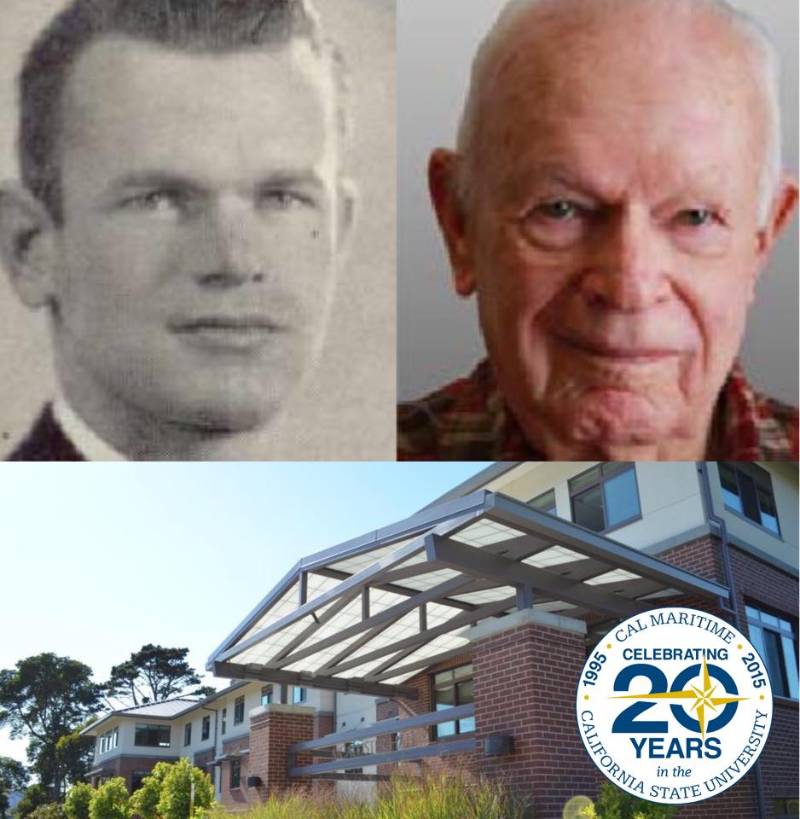
Day 13 - September 8
In December 2013, Cal Maritime and the T.S. Golden Bear became the first Maritime
Academy and Training Ship to be certified by the American Bureau of Shipping (ABS)
for International Maritime Safety Management Code (ISM) certification. The purpose
of the code is to "provide an international standard for the safe management and operation
of ships and for pollution prevention." In recognition of the fact that no two situations
are the same, the code is written broadly, so it can be adapted in many different situations.
"The ISM certification is crucial in the development of a campus and shipboard ‘safety
culture,'" said Harry Bolton, Captain of Training Ship. "This safety-conscious environment
is the foundation on which all U.S. maritime companies are built, and the reaction
from our maritime industry partners has been extremely positive and tremendously supportive."
The International Convention for the Safety of Life at Sea (SOLAS) first adopted the
ISM code in 1994, requiring full implementation over the next several years. Under
the code, each ISM compliant ship is audited, first internally and then each two-and-a-half
to three years by the flag state marine administration to verify the fulfillment and
effectiveness of its safety management system. Given the unique status of the TS Golden
Bear, these audits take place every year just prior to departing on the summer training
cruise.
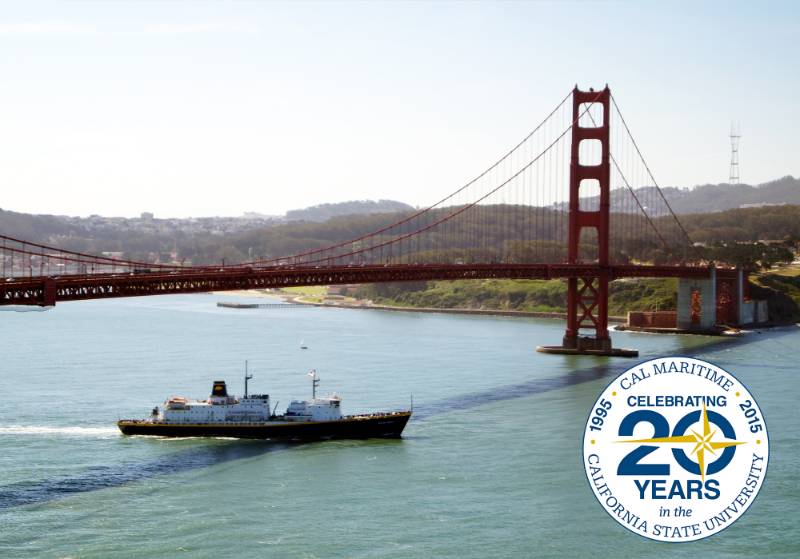
Day 14 - September 9
In 2014, Cal Maritime's Golden Bear Facility became one of only four subcontracted
test facilities in the world approved by the U.S. Coast Guard to perform ballast water
management system testing according to international and national environmental standards.
Aquatic invasive species are transported via shipboard ballast water. Reducing the
presence of these organisms in ballast water is a critical environmental challenge
facing the international maritime industry. New standards, put in place by the International
Maritime Organization and U.S. Coast Guard, are being employed to minimize the introduction
or transport of invasive species to and from lakes, coastal, and riverine environments.
By 2018, most commercial ships will be required to meet these new global standards.
The U.S. Coast Guard and the Environmental Protection Agency implemented their own
regulations in 2012.
"As our industry take the next big step toward the installation of onboard treatment
systems, having the combination of a controlled testing platform that is also ship-based
provides a unique perspective," said John Berge, vice president of the Pacific Merchant
Shipping Association.
The Golden Bear Facility has the unique ability to conduct both land-based and shipboard
testing aboard a single platform, the Training Ship Golden Bear, the 500-foot training
vessel of California Maritime Academy. With the facility's plug-and-play platform,
industry partners working to tackle ballast water issues will be able to test systems
tailored to meet specific needs and configurations.
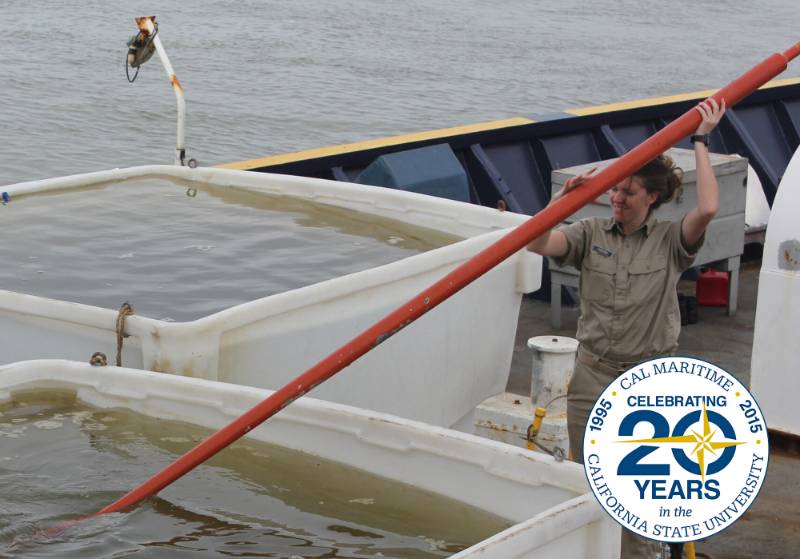
Day 15 - September 10
In October 2014, Cal Maritime's new Physical Education and Aquatics Center opened,
replacing Mayo Hall which was built in 1945. The old gym was constructed to accommodate
a student population of 200. These days Cal Maritime has 1200 students.
Positioned near the entrance to Cal Maritime where Maritime Academy Drive meets Sonoma
Boulevard, the new facility – the exterior of which features Cal Maritime's distinctive
compass rose logo – is visible from Interstate 80. Construction began in the spring of 2013.
"This building tells a story," said Cal Maritime President Thomas Cropper. "It's a
story of passion, and we have a chance to write the next chapter."
The 76,000 square foot center addresses a shortage of space for the Academy's physical
education and licensing programs, as well as many of the school's athletics programs.
Its features include:
• An Olympic size swimming pool with bleachers
• A survival training platform with hoist
• A main gymnasium with one basketball court, three full-size volleyball courts, and
seating for 635
• An auxiliary gymnasium with a full-size volleyball court and half-size basketball
court
• A full cardio exercise room
• A full free-weight and circuit training room
• An athletic training and rehab center
• Three conference rooms
• Ten faculty offices
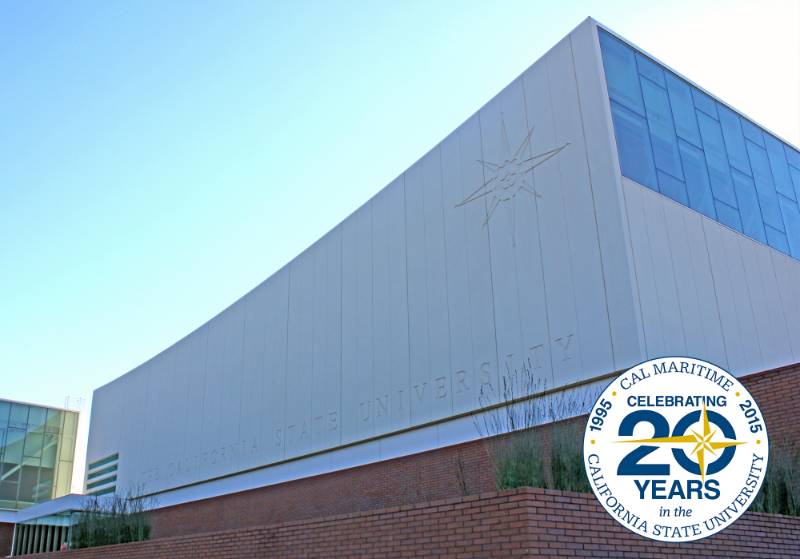
Day 16 - September 11
In March 2015, Cal Maritime Sailing won the Port of Los Angeles Harbor Cup for the
fifth year in a row, despite the fact that six different teams earned at least one
bullet. The event, in its eighth year, is organized and hosted by the Los Angeles
Yacht Club and raced aboard an equalized fleet of Catalina 37s. It brings together
10 collegiate sailing teams from across the nation, and races are held in the Pacific
Ocean outside the harbor breakwater.
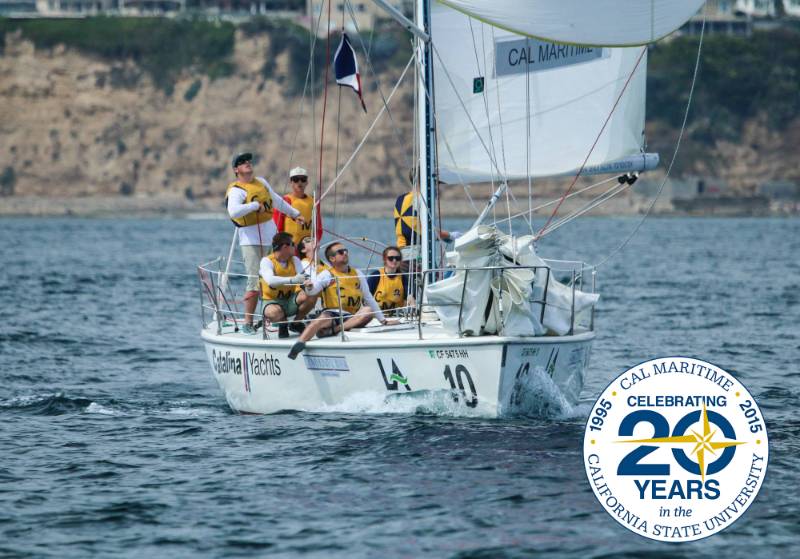
Day 17 - September 12
In November 2013, the new waterfront Dining Center opened on campus, replacing the
previous dining hall constructed in the 1950s. The old facility was initially designed
to handle 130 students during meals.
The new Dining Center features breathtaking, waterfront views from two stories and
a mezzanine level. The 26,000 square foot Dining Center seats 400 for meals and 272
for banquets. It was designed to host conferences and events on campus, as well as
daily meals for cadets.
The facility's design won the Best Practice Award for Higher Education Energy Efficiency
and Sustainability from the California Higher Education Sustainability Conference.
Construction was funded through fees paid by cadets on their meal plans.
The site of the Dining Center was originally the home of the campus bookstore, which
was relocated to a remodeled building that previously housed racquetball courts. McCarthy
Building Companies, Inc. served as the general contractor for the new campus bookstore,
which opened in January 2013. The 3,500 square foot brick and mortar bookstore includes
a first floor and mezzanine level stocked with textbooks, supplies, uniforms, gifts,
and clothing. The campus bookstore is operated by Follett.
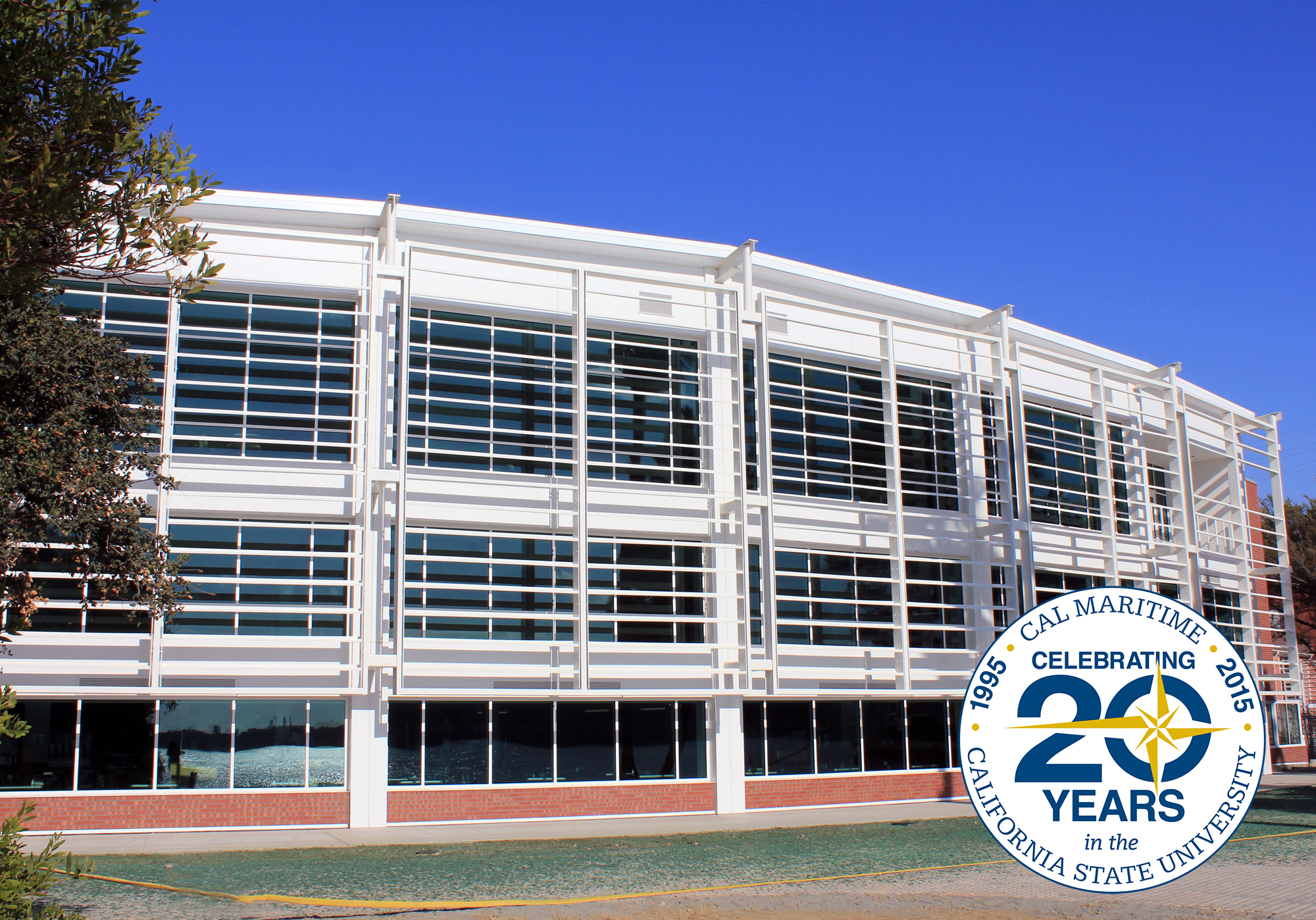
Day 18 - September 13
In July 2014, Cal Maritime celebrated the continued growth of campus as demolition
began at the site of the former Vallejo Inn. Representatives from campus and the community
gathered for a ceremony to mark the beginning of the project.
The addition of the property to the campus footprint addressed a critical need for
space, and the University is currently studying options for potential future use.
In the meantime, the property will provide additional parking space.
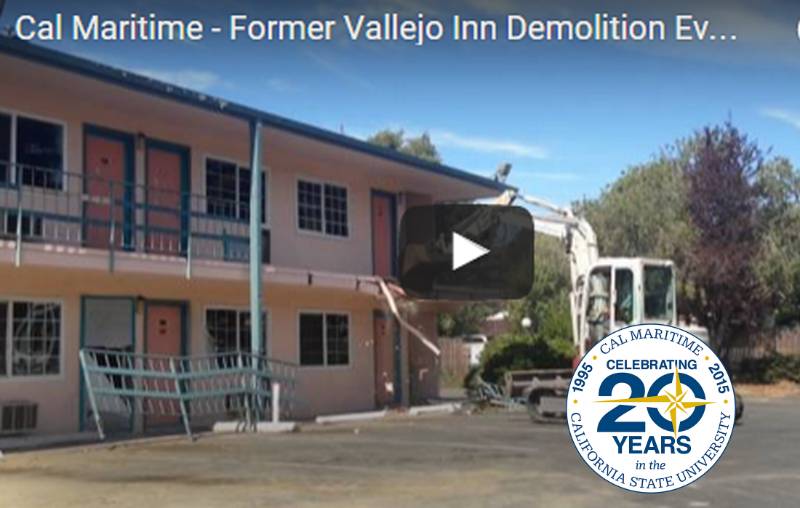
Day 19 - September 14
In 2015, The California State University crossed the milestone of having three million
alumni worldwide. Cal Maritime's April 25 Commencement Ceremony was the earliest in
the 23-campus system, making the Academy the first campus in the state to celebrate
the three million alumni milestone.
At the Commencement Ceremony, 213 undergraduates and 14 graduate students from the
Master's Program in Transportation and Engineering Management received their diplomas.
The California State University is the largest, the most diverse, and one of the most
affordable university systems in the country. In addition to their 3 million alumni,
the 23 campuses of the CSU serve 447,000 current students.

